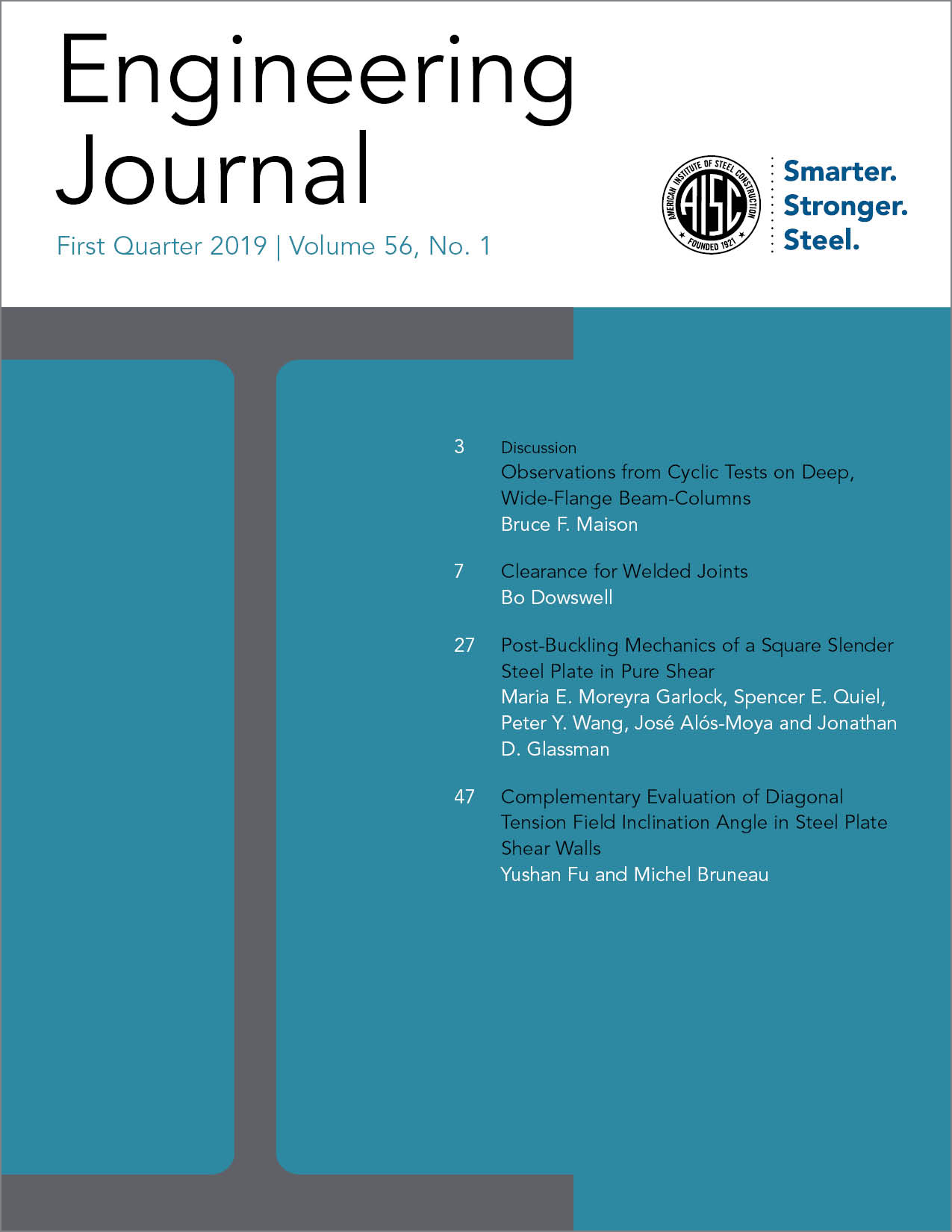Complementary Evaluation of Diagonal Tension Field Inclination Angle in Steel Plate Shear Walls
DOI:
https://doi.org/10.62913/engj.v56i1.1141Keywords:
steel, plate, shear, wall, inclination angle, tension, field, LS-DYNA, seismic design, ductile designAbstract
Complementarily to previous studies, research was conducted to investigate whether the equivalent constant angle of diagonal tension field action should be taken as either 40° or 45° for ductile steel plate shear walls (SPSW) designed per current codes. A two-dimensional finite element (FE) model was first calibrated against results from a prior study of “limited-ductility SPSW” by comparing effective stress contours and average angle of diagonal tension field action at different locations across the web plate. Then, this SPSW was redesigned as a ductile SPSW in compliance with the 2016 AISC Seismic Provisions (AISC, 2016a) to have fully restrained beam-to-column connections and analyzed using strip models and finite element models, respectively. The AISC moment-axial force interaction equation was used to compare demands in the SPSW boundary elements obtained from the strip and finite element models. With respect to the use of a single angle in design, it is shown that using an inclination angle of 45° is slightly (but not significantly) more conservative than using 40° as far as boundary element design is concerned. On the basis of these observations, along with findings from previous research on the diagonal tension field inclination angle, it is recommended that a single constant angle of either 40°or 45° be used for the design of SPSW.

